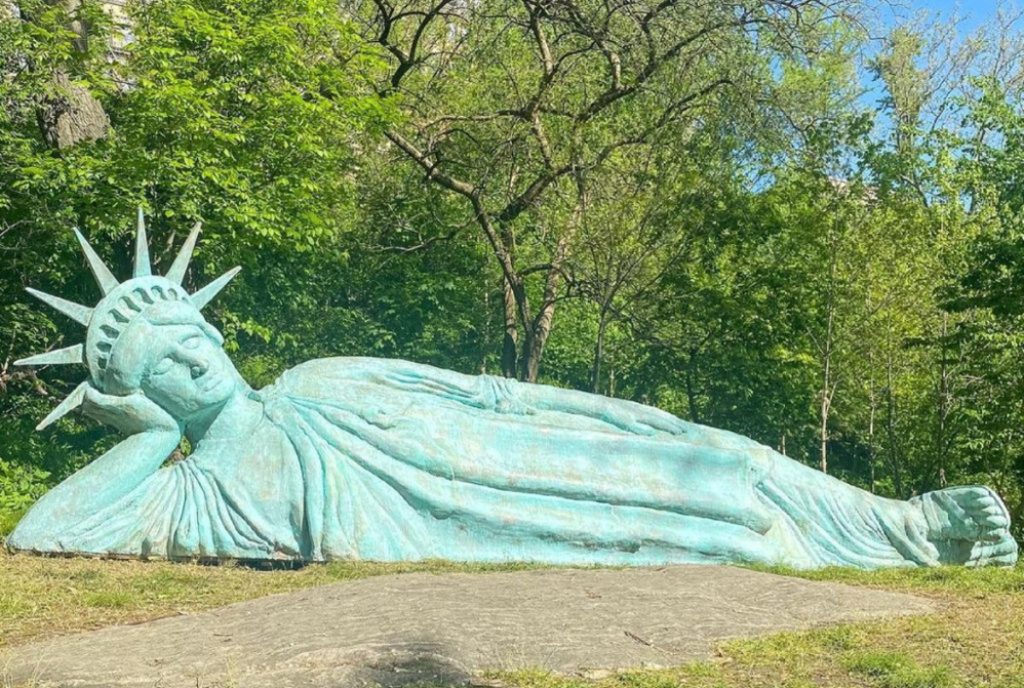
Back in the 2010s, our son married a beautiful Chinese woman named Yi Feng. We held a big celebration in Baltimore, because that’s where the oldest member of our family lived. Warren Ballard was 100 years old at that time.
Yi’s parents flew in from China. After the very nice celebration and breakfast the next day, the six of us—Aaron and Yi, Yi’s parents, and Joan and I—drove to Fairfield in two cars.
Driving across Ohio, looking out at miles and miles of corn fields, Yi’s mother, whose English nickname is Sally, said, “America is a big, empty country.”
That was a jarring observation. We live in the third most populous country in the world. Empty is not a thought that comes to mind when I think of the United States. But China has four times as many people living in roughly the same area as our lower 48 states.
Sally’s observation has been coming to mind again lately. The Challenger Job Cut Report in November shows that we have roughly two million more job openings than we have unemployed workers. In other words, we have a big shortage of labor. Maybe Sally was right.
President Trump was right. There is a flood of people along our southern border trying to get in. But I believe he was quite wrong about what should be done.
What we have at the southern border is not a crisis. It’s an asset.
Around the world, birthrates are in decline. We are not the only country facing a future of declining populations. But we are a country that people are literally dying to get into. Our asset is that people want to live here.
This seems like a pretty obvious match. We are short about two million workers and we have people coming to our southern border who want the work. It wouldn’t seem like this would be particularly difficult, but it is.
When I was a boy, I read about something called the Pan American Highway. The idea was that you could drive from Alaska to Tierra Del Fuego. It was almost finished in the 1960s, but the last 55 kilometers never got built. Today, that stretch is known as the Darien Gap. It’s in the southernmost part of Panama, where the country borders Colombia, and it spans the border into northern Colombia. The road was never finished because this is one of the wettest jungles and most mountainous areas in the world.
The existence of this deep wilderness is largely the reason for Panama being a country. Originally, what is now Panama was the northern regions of Colombia. But governing Panama from the other side of the Darien Gap would have been a challenge, even today. So with the aid of the Teddy Roosevelt administration, Panamanian separatists were successful in breaking away from Colombia.
For decades, the Darien Gap was a place where backpackers disappeared, never to be seen again. Today, desperate refugees, mostly from Haiti, Venezuela, and Cuba, gather in northern Colombia by the thousands waiting for their chance to walk through the Darien Gap as they begin their trek through the jungles of Central America and on through Mexico to the southern U.S. border.
There are people of every kind walking in groups through the jungle—children and their parents and grandparents. Parents must carry food, water, and often their children too. This is rough terrain. They walk on jungle trails, through streams, over mountains. They are attacked by insects, wild animals, and bandits. Many don’t make it and bodies are simply pushed into the brush.
Why am I recounting this misery? Because that’s how desperate thousands and thousands of people are to get to the land of opportunity. And here in that land, we need people and we won’t let them in.
Why? Some people say it’s because they will take jobs away from Americans, but since we are currently short two million workers, that seems pretty unlikely. Some people say it’s because they are criminals. I’m confident that some of them are, but I’m also confident that the majority are not.
Throughout human history, those who have been willing to move for opportunity are generally the go-getters. Lazy people don’t risk their lives for a chance at a better life. Whatever screening process we create, some criminals will still get through, but as always, if you are a guest in this country and commit a crime, you can be deported. Locking hundreds of thousands of people out of our country because we are afraid of the small criminal element doesn’t make sense.
In 2021, over 1.6 million people were apprehended at the southern border trying to get in. The number one thing restraining economic growth in America today is labor shortage—and we won’t let in people that want to work. This makes zero economic sense.
Immigration is the easy solution. The economy would grow faster, and people seeking a better life would get that chance. Robots are the harder solution.
I’m still shaking my head.
Hal Masover is a Chartered Retirement Planning Counselor and a registered representative. His firm, Investment Insights, Inc is at 508 N 2nd Street, Suite 203, Fairfield, IA 52556. Securities offered through, Cambridge Investment Research, Inc, a Broker/ Dealer, Member FINRA/SIPC. Investment Advisor Representative, Cambridge Investment Research Advisors, Inc., a Registered Investment Advisor. Investment Insights, Inc & Cambridge are not affiliated. Comments and questions can be sent to hal.masover@emailsri .com. These are the opinions of Hal Masover and not necessarily those of Cambridge, are for informational purposes only, and should not be construed or acted upon as individualized investment advice. Investing involves risk. Depending on the types of investments, there may be varying degrees of risk. Investors should be prepared to bear loss, including total loss of principal. Past performance is no guarantee of future results.
Indices mentioned are unmanaged and cannot be invested in directly.
